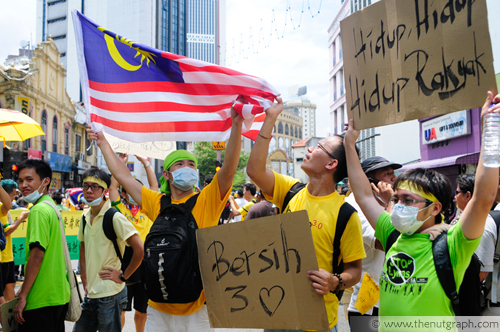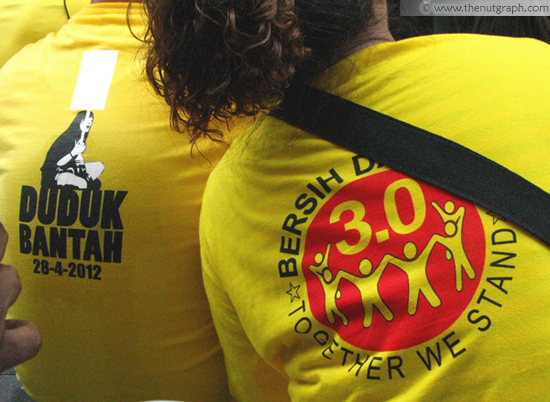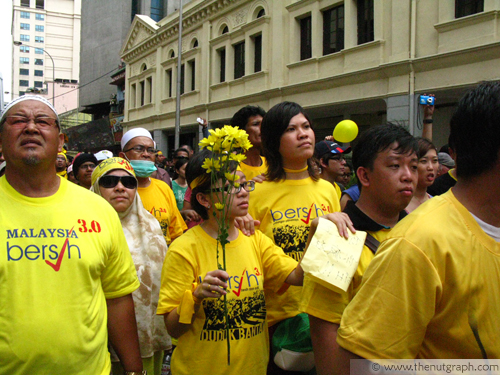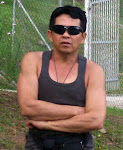IF you’re a Malaysian reading this, you will have seen what happened at Bersih 3.0. Whether or not you were in Kuala Lumpur on 28 April, or glued to Facebook or Twitter, you must have encountered images, videos, or reports of the colossal rally that started as a festive sit-in and ended in tear gas.
The fumes have cleared, but the air is still thick with claims and counterclaims. Many have accused the police of excessive force. The police have identified more than 100 suspected lawbreakers at the rally. To say nothing of the barrier breaching, censorship, political hijacking, supposedly UN-approved teargas, and unidentifiable policemen.
And then there are the stories. Stories from extraordinary Malaysians who participated in Bersih 3.0 for different reasons, and who encountered different amounts of tear gas. But who all felt a common impulse to share their observations with the wider community.

So what was the impact of Bersih 3.0? High-profile statements and official spin aside, I believe it’s this collective storytelling that will impact democracy in Malaysia.
Democracy and stories
Political scientists have yet to agree on a definition of democracy. One thing is clear: it’s not just elections. It isn’t even just transparent and fair elections.
In fact, elections are a bit of a political oddity. Political scientist Benedict Anderson notes inThe Spectre of Comparisons (1998) that voting “is almost the only political act imaginable in perfect solitude”. While most forms of political participation involve visible and organic collective action, voting is rigid and private. At the polls, political communities are fragmented into individual actors, for the sake of equal representation of every individual.
But this representation has little meaning unless the choices driving it are built on good information, and unless the representatives are held accountable to their mandates.
At one extreme, we have elections – a curiously constrained but universal part of democracy. At the other, there are rallies like Bersih 3.0 – climactic but often polarising moments of political participation. And in between are the ongoing and sometimes unexciting but nevertheless vital discourses that define the political sphere.
This is where the Bersih stories come in. We are witnessing a surge in the number of Malaysians expressing personal opinions in public spaces, because they rightly want to record and share the fact that they were there on 428.
Crucially, these stories don’t stand alone. Many writers say they were inspired to share after reading someone else’s story. The reader comments on many accounts of Bersih 3.0 show genuine, if occasionally confrontational, engagement with each other’s experiences of being Malaysian.

Building bridges
The Bersih stories are bridges. They connect the systematic symbolism of elections and the raw symbolism of mass assemblies with the practical realities of people who are back to their everyday lives. Only with more yellow clothing and less tolerance for some of the nondemocratic norms in our country.
They also connect individual Malaysians. The Bersih 3.0 narratives have come from a humbling variety of people. Seasoned bloggers. First-time protesters. Mothers. The daughter of an FRU officer. And – I accept charges of nepotism for this one – my cousin, a SEA Games medalist who attended the rally as a medic but was beaten by the police.
This virtual post-Bersih show-and-tell is democratic to its core. By sharing our stories, we affirm that individual experience matters to the larger group. That every voice has equal value.
For reasons that political scientists also have yet to agree on, Malaysia has seen a lot of bridge-building over the last few years. The March 2008 elections were pivotal. The results were a shock because no one, not even those who had voted for the opposition, had imagined there were so many others like them. After March 2008, it got a bit easier to dream together.
Then last July we had Bersih 2.0, where a fabulous hodgepodge of Malaysians flooded Twitter with Bersih stories. After the event, images of a woman holding a flower and drenched in chemically laced water made Anne Ooi a rallying point for countless netizens who claimed her as their Aunty Bersih.
Global bridges
Here’s another key way in which the Bersih stories are bridges: they connect Malaysians across the globe. After Bersih 2.0, the steering committee released a report titled “The awakening of the Malaysian diaspora”, celebrating the 4,000 overseas Malaysians who came together in 38 cities on 9 July.

Bersih 3.0 rally in London.
Bersih 3.0 had an even larger international presence, reportedly spanning 85 locations in 35 countries. Watching photo montages of the Global Bersih 3.0 demonstrations is enough to trigger warm fuzzy patriotism, as well as incredulous laughter at the glorious improbability of it all.
This kind of bridge is essential when you’re living abroad. First, these shared social platforms facilitate the logistics for diasporic Malaysian gatherings in the first place. Second, they allow overseas Malaysians to express their continued stake in the country, and to share that articulation with those at home.
Internet bridges
Internet-based media has been key to my own bridge-building experience. Over the last six months, I have seen my electoral roll record on the Election Commission website change from a regular voting status, to a regular voting status with a postal voter application in process, and then back to a regular voting status with no acknowledgement of my absent voter application. My IC number then vanished completely from the electoral roll for a few weeks.
My original voter registration has yet to reappear in the electoral roll, but at least now the website says that my absent voter registration is being gazetted. Throughout this process, support from Facebook friends – Malaysian and otherwise – has kept me from thinking that I am a crazy brat for demanding my right to vote.
In some ways, there is nothing new about communications technology creating a shared space for the development of egalitarian national consciousness. In Imagined Communities(1983), Benedict Anderson argues that the sharing of ideas through the printing press is essential to the development of the “nationally-imagined community”.
In Malaysia, the government has always kept a fairly firm grip on the print media, stunting the development of a democratic imagined community.
Enter the internet. As Digital News Asia editor A Asohan observes, its messy decentralisation creates a virtual space for connections, stories and truth. Regardless of how much tear gas and censorship the government inserts into the physical public space.
We have a long way to go. We need to sustain the sharing of stories and reflections beyond the aftermath of a catalytic event through the drawn-out slog for political liberties. We need to discuss ways to translate the tentatively shared dreams into gritty policy solutions. We need to occupy these bridges – both defending them and filling them with traffic, in the name of a democratic Malaysia. ![]()




No comments:
Post a Comment